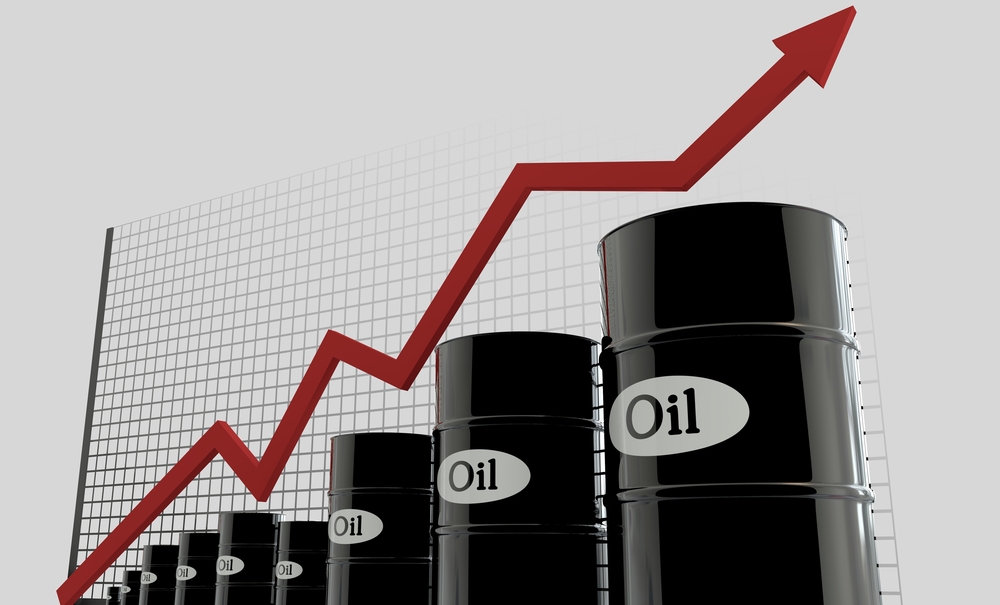It’s been a wild and bumpy ride for oil and gas prices and the industries that rely on specialty oil products. That volatility has begun to calm recently. What does that mean for the near future?
First, a quick look back on where we’ve been.
- Crude oil prices were already increasing throughout 2021 (up almost 60%) as pandemic-era demand rebounded faster than supply could ramp back up.
- The spot price of West Texas Intermediate, a global benchmark, reached an annual average of $68 per barrel in 2021, the highest in the past three years. The price rocketed from $47 to a peak of $86 in October.
- All the downstream effects were already happening: consumers saw gasoline prices rising while suppliers of oil-derivative products and their customers felt the pricing pressure.
Then came the Russian invasion of Ukraine in late February.
- It may be hard to remember, but headlines about consumer “pain at the pump” didn’t start then. They only become more frequent as oil prices started to rise again.
- In early March, crude oil prices jumped to above $100 per barrel. And pricing pressure on the specialty oil industry – and on our customers – only intensified.
- We’re keeping a close eye on this, weighing the arguments of analysts and remaining cautiously optimistic.
Here’s what we’re seeing and our take on what the key industries we serve can expect.
Specialty Oil: Where We Are, Where We’re Headed
As global supply tightens, and investors determine whether to place their bets on oil and gas stock going bullish or bearish, the bottom line for product manufacturers hangs in the balance.
Our small business customers in particular are struggling with all kinds of pricing pressures: the cost of refined oils, lubricants, and other petroleum-derived fluids and solvents, rising costs of transportation and other fuel costs, and more.
Recently, we’ve seen some good news on this front. The U.S. government announced in early April that it would release up to 180 million barrels of crude oil from the Strategic Petroleum Reserve, and the market responded favorably. The price of West Texas Intermediate Crude, another key benchmark, dropped below $100 per barrel.
Some analysts are quick to point out that major releases in the U.S. and Europe have succeeded in bringing costs down in the short term, only to quickly climb again. But others point to other signs for hope.
Signs Pricing Pressure Could Increase
Let’s start with a few points of concern taken from industry analysis:
- Sanctions on Russia by the U.S. and European Union may push oil and gas prices up higher.
- Global supply disruption is adding to a pre-existing seasonal effect, as oil prices already tend to go up in the spring every year.
- Long-term, many oil and gas investors are expecting prices to remain high even after the war in Ukraine is over.
- Some argue that OPEC+ is struggling to revive output and won’t be able to do enough to contribute to stability any time soon.
- The price-pressuring demand for energy is expected to remain constant.
Signs Pricing Pressure Could Decrease
Now, let’s look at some reasons to be optimistic about pricing leveling out:
- Some analysts simply believe the oil rally is too steep to sustain and an end to the cost spiral is inevitable.
- Historically, higher prices themselves are often the cure for high prices – driving enough reduction in overall demand to force price drops.
- The other side of the OPEC+ argument is that the increased supply resulting from their production ramp-up will, in fact, help end the cost spiral.
- Other geo-political and global economic factors, such as a potential Iran nuclear deal, could help pull prices down.
- Some analysts anticipate that oil markets will actually be oversupplied by next year, effectively resolving supply tension.
- Historically, oil pricing tends to weaken toward the end of the year (as it did in 2021, after the October peak) – so by Q4, at least, we could see some relief.
- Demand could actually drop more than history suggests, given new work-from-home models, cuts in business and leisure air travel, and the popularity of electric cars.
If we lean toward arguments for optimism, what might this mean for specialty oil and the industries we serve?
Effects on Specialty Oils and Lubricants
Historically, typical small fluctuations in crude oil pricing do not have an observable effect on base oil pricing or on other petroleum derivatives such as white mineral oil. These markets have a slower response to variation but do move as the trends stabilize at higher or lower averages.
The refineries we work with set responsible prices that anticipate these changes. Their production pricing floors have always been just conservative enough to stay above the volatility. However, a sustained cost spiral will force refiners to increase these floors, which would mean downstream effects on specialty oils and lubricants.
If the more optimistic forecasts bear out, pricing has leveled out and could even fall, preventing further increases in specialty oils.
Of course, we are keeping our eye on other pricing pressures, such as rising inflation and transportation costs. But let’s not neglect to note the good news as it comes: at the very least, signs that the rapid upward crude oil cost spiral is slowing are worth applauding.
Renkert Oil Works with Specialty Oil Customers to Help Contain Costs
Our customers cover the full spectrum of product manufacturers. These are a just a few examples of the industries we serve and some of the products they rely on:
- Automotive and Industrial Oil Manufacturers – base oils, rubber process oils
- Food Manufacturers – food-grade white mineral oils
- Power Suppliers and Operators – electrical insulating oils/transformer oils (T-oils)
- Agricultural and Household Product Manufacturers – carrier oils, solvents, grain & feed dedust oils, paraffinic spray oils, fertilizer dust control
- Rubber, Adhesives, Sealants, Insulation – extender oils/process oils
- Household and Sports Equipment – cleaning & polishing products, fragrance carrier oils, soft-touch TPE extenders, gel components
These and many others count us as a key partner in reliable supply, logistics, and product consultation. Part of that consultation is on cost containment strategies.
Given all the volatilities in this market today,
- Might there be specialty oil alternatives that are more cost-effective?
- More economical formulations that don’t sacrifice product quality below established standards?
- Shorter, more diverse supply chain strategies that could reduce your transportation costs and/or costs associated with supply insecurity?
Whatever your industry, if you’re buying specialty oil products today, these are the conversations you need to be having with Renkert Oil, experts in this industry for four decades.

